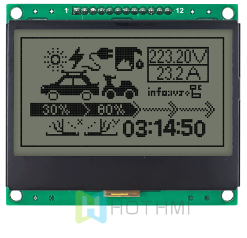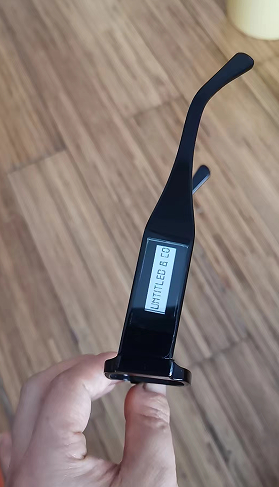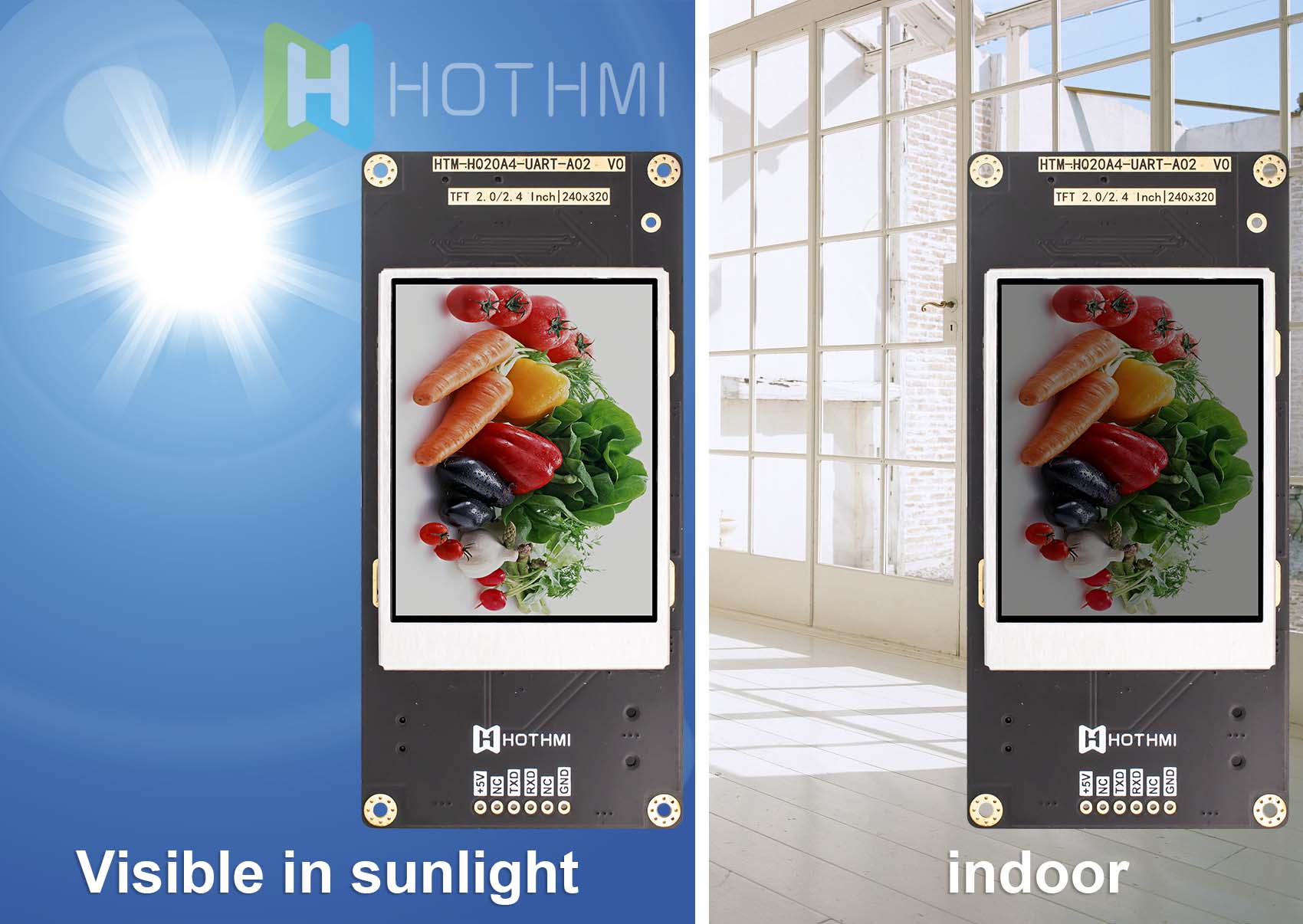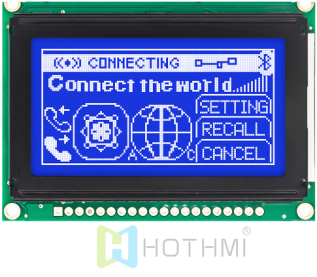Transmissive displays – always with backlight
Transmissive displays work by transmitting light through the display surface. This is achieved by using a series of layers, including a liquid crystal layer that can be manipulated to control the amount of light that passes through, and a backlight that provides the light source. When an electric current is applied to the pixels in the display, it allows more or less light to pass through, thus forming an image. This type of display does not require a backlight and is clearly visible in both normal office lighting and dark environments. Transmissive LCDs are not usually visible in bright sunlight, but by using a very bright backlight, it is possible to make a sunlight readable transmissive LCD.
Transmissive 2.0 inch 128 x 64 Graphic LCD Display | For Arduino | White Backlight | 128x64 Graphic LCD Module | ST7567 SPI | STN Negative Display | White Text on Blue Background
? Type: LCM with Chinese fonts
? Display pixels: 128x64
? Dimensions (mm): 54.6x52.0x5.2
? VA size (mm): 45.2x27.0
? AA size (mm): 40.92x24.2
? Dot pitch (mm): 0.52x0.52
? Application: Industrial instrumentation
? Viewing angle: 6H
? Backlight/brightness: white
? Pin: 12PIN
? Interface mode: SPI
? Special instructions: Optional font library
? Operating temperature: -20~70℃
? Supply voltage: 3V/5V optional
? Driver chip: ST7567
Transmissive LCDs are generally not suitable for products that require power consumption, because if the backlight is turned off, the display cannot be seen. Common transmissive displays can be applied to TFT LCDs used in mobile phones, tablets, and TVs.
Reflective display - no backlight, no light source, needs to be used in bright environment
Reflective display is also called passive display. As the name implies, reflective display is installed with reflective material under the LCD panel, replacing the luminous material of transmissive display. When the ambient light is sufficient, it uses the light reflected by the mirror to illuminate the screen. However, it cannot be displayed clearly in dark places, because the weak ambient light is not enough to be reflected to illuminate the screen. In bright sunlight, reflective LCD is still visible and will not fade - this is also called "sunlight readable". But reflective LCD is not suitable for dark environments. Since there is no need for backlight, reflective display is also classified as ultra-low power display. E-paper is also a reflective display, but it does not belong to LCD.
(Figure 1:Reflective graphic LCD ultra low power consumption without backlight;Figure 2 :E-paper)


(Figure 1) (Figure 2)
Transflective Display - Combining the Advantages of Transmissive and Reflective Displays
Transflective LCDs reflect ambient light, so no backlight is needed, and the screen is visible in normal office lighting. In bright sunlight, transflective LCDs remain clearly visible without fading - this is also called "sunlight readable".
Transflective LCDs also allow light from the backlight to pass through the LCD. Therefore, a transflective LCD with a backlight can be clearly seen in dark environments.
In short, transflective backlit LCDs can be used in all lighting environments, from complete darkness to full sunlight.

More related articles recommended:
What is the structure of the display backlight?
What are the types of LCD backlight?
The protective effect of reflective TFT on the eyes
Translucent and transflective TFT
How does LCD achieve ultra-low power consumption?
For more information, please contact us directly!








 Search
Search





